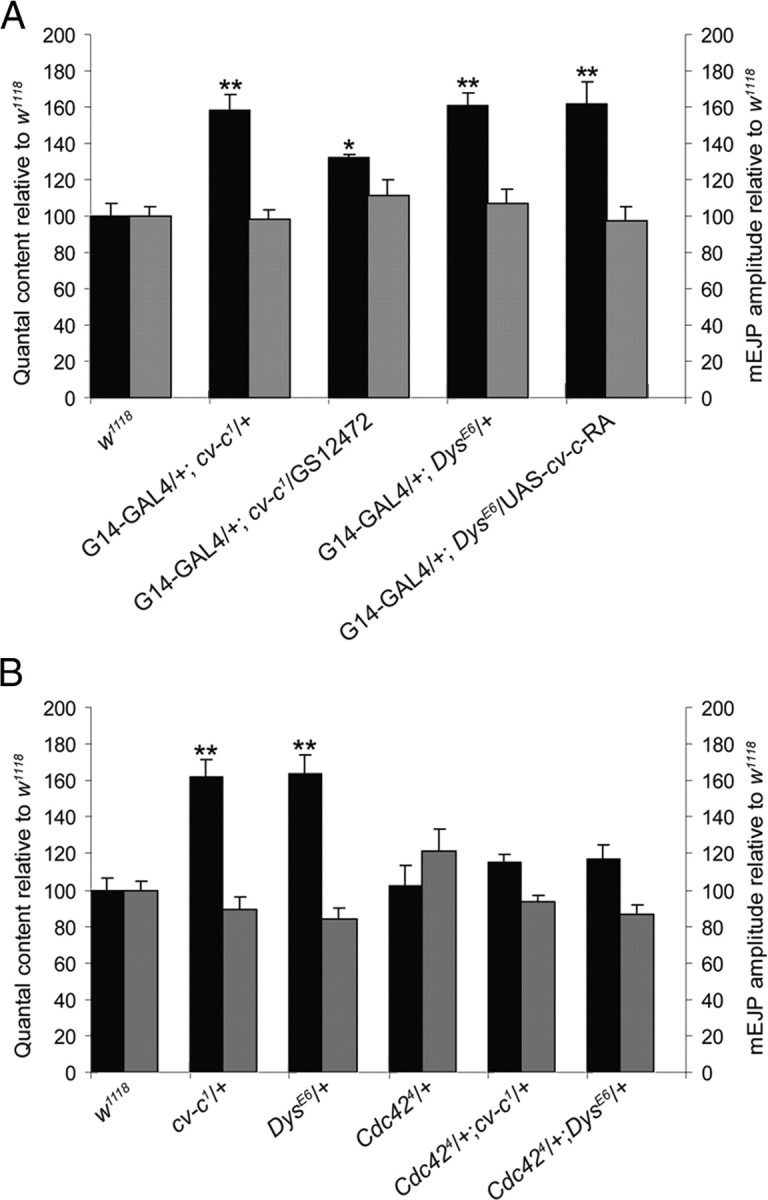Figure 6.

Dys interacts with a Rho GTPase signaling pathway at the larval NMJ. Bar graph representations are shown of the mean ± SEM values of the QC (left y-axis, dark bars) and the mEJP amplitudes (right y-axis, light bars) normalized to wild-type controls recorded from w1118 third-instar larvae. A, Overexpression of RhoGAP cv-c in the heterozygous DysE6 mutant muscle fibers does not reduce the increased QC level, whereas overexpression of Dys in the muscle in the heterozygous cv-c1 mutant partially reduces the otherwise increased QC toward wild-type levels. B, Heterozygosity for the Cdc424 mutant allele in either the heterozygous cv-c1 or DysE6 mutant background restores QC to wild-type levels. This suggests that Cdc42 is a substrate of Cv-c in a homeostatic signaling pathway operating at the NMJ and that Dystrophin genetically interacts with the Rho GTPase signaling pathway. All measured values are presented in supplemental Table 2 (available at www.jneurosci.org as supplemental material).
